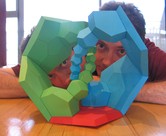


| Home > Gallery > My Models > 4D Projections > 120 Cell (5-Hi) | |
| Prev (Cantitruncated Tesseract (308-Grit)) | Next (Expanded Truncated Truncated Pentachoron) |
120 Cell (5-Hi) |

| Like or comment on facebook |
The 120-cell is a regular polychoron whose sides are 120 dodecahedra, meeting four per vertex. This model represents 21 of those cells, projected from 4D into 3D using a perspective projection. The regular dodecahedral cells are distorted by the projection, just like sides of a cube when projected into 2D. The model shows two rings of 10 dodecahedra (one in green and one in blue), showing how these rings pass through each other without touching. The 21st cell (in red) is only there to hold the two rings in place relative to each other and to act as a base for the model.
I built each distorted dodecahedron separately, and then glued them together. You can find separate models for each part in Stella4D's library as follows:
- From the menu: "File→Polyhedron List" (opens a dialog box)
- From the panel on the left, select "4D Library→3D Aspects"
- From the panel on the right, scroll down to the files starting with "120 Cell - Linked Rings".
- Double-click one to open it, or click it once and hit OK.
- To print the nets make sure the window showing the nets is selected first by clicking in it. Then use "File→Print (via Preview)"
See this tutorial for some comments on obtaining nets for building paper models of 4D polytopes.

|
Watch animation of this model rotating in 4D. See how the interlocking rings rotate through each other as the polytope rotates in 4D (1 minute). |
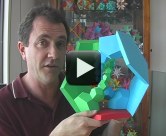
|
Watch a video of this model being constructed here. Includes introduction to the model and 4D in general, details about constructing the model in Stella4D, and an animation of the parts coming together (13 minutes). |

|
With the 4D 120-cell loaded in Stella4D, we need to hide most of the
cells, leaving just two rings of ten dodecahedra remaining.
Colour Mode makes it easy to
recolour each cell in a ring like this, then you can hide all the
remaining cells of the original colour in one hit.
To build the model though, you don't even need to do this. Decide on a scale in 4D, then hide all but one cell (by hiding one cell then toggling the hiding for all cells) and convert to 3D to get nets for that one cell. Do this for each cell type required and print nets to make four of each cell type (two in each of two colours). |

|
Here are the five different types of projected dodecahedra required. Two of each must be made in each of two colours, plus one extra big one for the base. |

|
The biggest of the projected cells requires some special treatment. Here it is before folding the last big flap down. The problem though is faces opposite are so close to coplanar that they don't hold their structure very well, and easily dent in. We don't want this in the finished model. |

|
Gluing an extra structure inside will prevent this. Here it is the other way up, with the additional piece at the side. |

|
This piece is glued to the four existing internal tabs around the central pentagon, leaving one small flap unglued. |

|
A better look at that unglued flap. |

|
Finally glue the last small flap of the extra piece down. Now you can glue the last big flap of the cell down too. There's no need to glue the top of the internal piece to the large flap, but the extra piece will ensure the cell can't dent in from outside. |

|
All 21 cells, ready to go. |
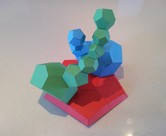
|
Start gluing them together, face-to-face, being sure to glue the right pieces together! |

|
The result just before adding the two big green and blue cells. It would probably be better to start with the big cells and work in to the smaller ones, and only attach to the base cell (red) at the end, rather than at the start. This would minimise problems with small twisting errors accumulating between the small parts. I only did it this way because I wanted to make an animation of the model coming together and decided this sequence would work best aesthetically. |

|
Here's the model on display at the Bridges 2016 conference in Jyväskylä, Finland. |

|
Wire-frame image from Stella4D showing all 120 cells. |
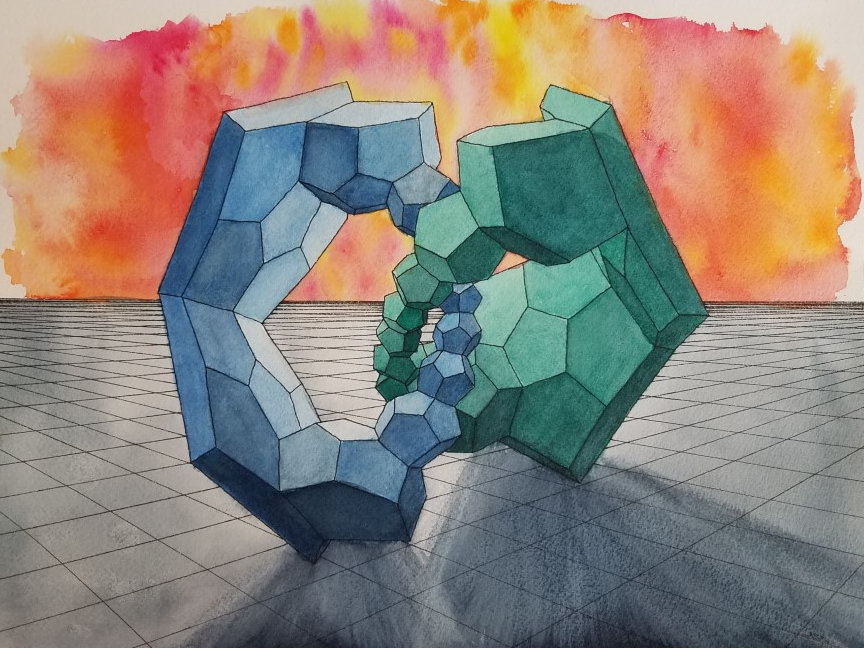
|
Here's a watercolor of the model painted by Kyle French |
Here are some more photos of the model (click for larger images).
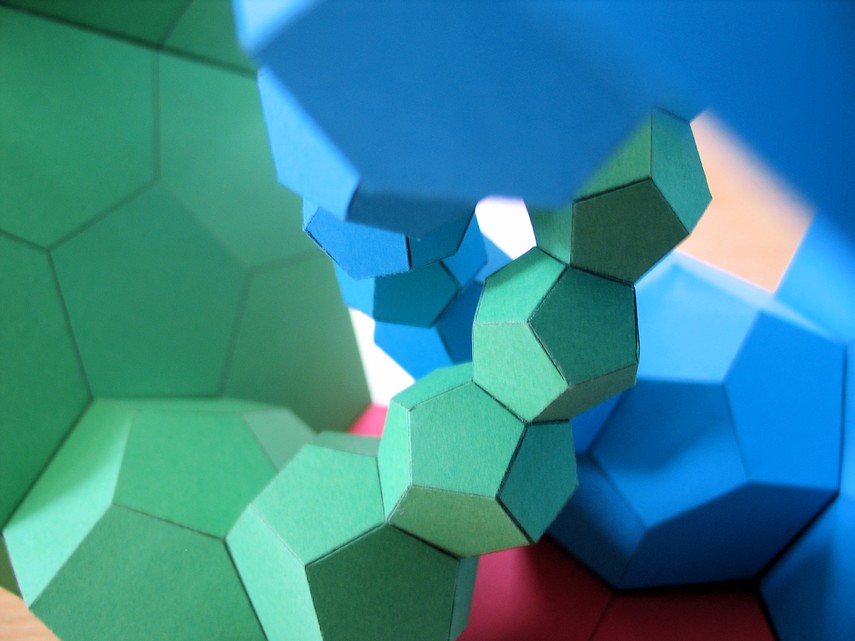
| Home > Gallery > My Models > 4D Projections > 120 Cell (5-Hi) | |
| Prev (Cantitruncated Tesseract (308-Grit)) | Next (Expanded Truncated Truncated Pentachoron) |

